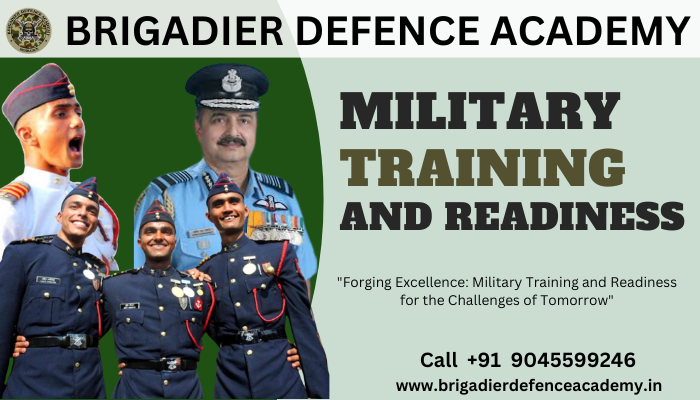Introduction: Military Training
The cornerstone of a country’s Defence in the ever-changing world of international security is military preparation and training. Because of the complexity of modern combat, a military force needs to be highly trained, versatile, and well-equipped. This blog examines the vital significance of military preparation and training, focusing on the essential elements that enhance armed forces’ efficacy against changing adversaries.
The Development of Military Education
Since its conventional beginnings, military training has evolved significantly. The modern military places a strong emphasis on a comprehensive strategy that extends beyond the fundamentals of warfare. The development of military training has included a wide range of subjects, from cyberwarfare and psychological operations to the operation of sophisticated weapon systems. Using state-of-the-art technology is now essential to preparing warriors for the complex problems of the twenty-first century.
Simularism and Realism:
Using realistic scenarios and simulations is one of the main components of military training that works well. Through the use of these simulators, soldiers can get crucial real-world experience in a range of scenarios in a safe setting. The aim is to equip military forces for the unpredictability of contemporary battles through various training methods, including virtual reality simulations, live-fire drills, and urban warfare exercises.
Cooperation and Team Activities:
Interoperability across various military branches and allies is essential in a time when joint and coalition operations are frequent. Diverse military components come together for joint exercises to improve synchronization, cooperation, and synergy. These exercises, which are frequently carried out in big quantities, replicate real-world situations and develop the cooperative mentality that is necessary for success in international operations..
Flexibility and Sturdiness:
An indication of a military force’s preparedness is its capacity to adjust to quickly shifting conditions. Soldiers must learn resilience and adaptation as part of their training in order to be ready for unforeseen obstacles on the battlefield. This entails decision-making exercises that mimic the high-stress scenarios that military personnel may encounter, stress inoculation, and mental conditioning.
Integration of Technology:
Technology has completely changed the manner that military training is carried out. Modern technology, such as artificial intelligence (AI) and augmented reality (AR), can improve training programs’ efficacy and realism. Soldiers can practice in a risk-free environment while becoming acquainted with how cutting-edge equipment operates in simulated scenarios.
Leadership’s Function:
Effective military training depends not only on individual prowess but also on capable leadership. It is the responsibility of leaders to instill trust, give clear instructions, and promote a continuous improvement culture. The development of officers and NCOs who can lead their teams through the complexity of modern combat depends heavily on leadership training programs.
Keeping Quantity and Quality in Check:
Although the amount of training hours is crucial, the quality is just as vital. Achieving a suitable equilibrium between the two guarantees that military personnel receive comprehensive and significant training. A concentration solely on quality could result in inadequate preparedness, while an overemphasis on quantity could cause fatigue. Finding the ideal balance is essential for building a military force that is resilient and well-prepared.
Being Prepared for Hybrid Threats:
Modern battles are different from traditional warfare in that they involve hybrid threats, which combine irregular, asymmetric, and conventional tactics. In order to meet these intricate difficulties, military training programs must adapt and incorporate elements of information warfare, cybersecurity, and counterinsurgency techniques.
Conclusion:
In conclusion, the effectiveness of a country’s Defence capabilities depends on how well-trained and prepared its military is. Armed forces need to be tech-savvy, flexible, and alert as the geopolitical environment changes. Maintaining the world’s security and stability depends on nations being equipped to meet the challenges of the future, which is why military training must always strive for excellence. Using a comprehensive strategy that includes strong leadership, technological integration, and lifelike simulations, military forces may carve out a successful route in a constantly shifting global environment.







